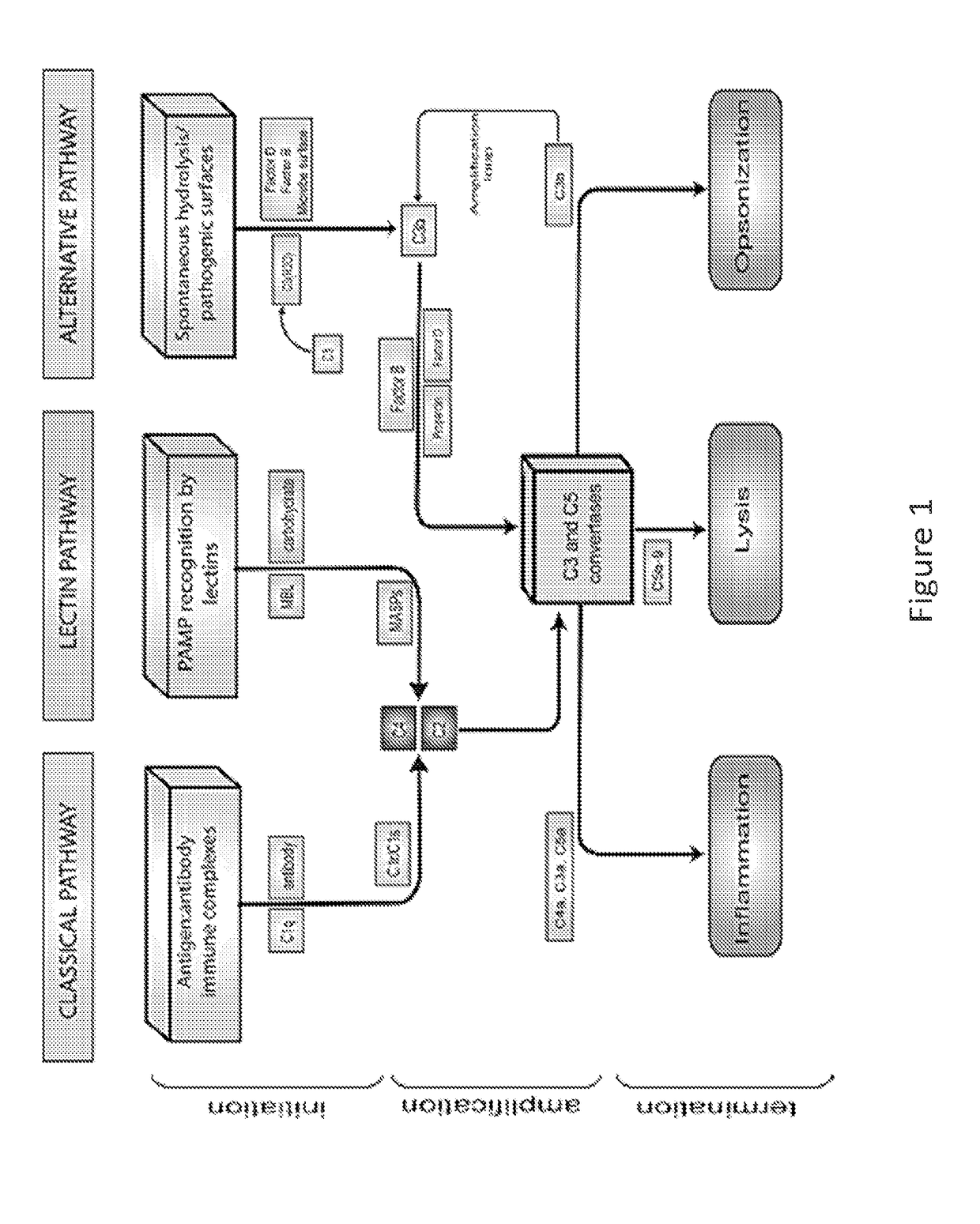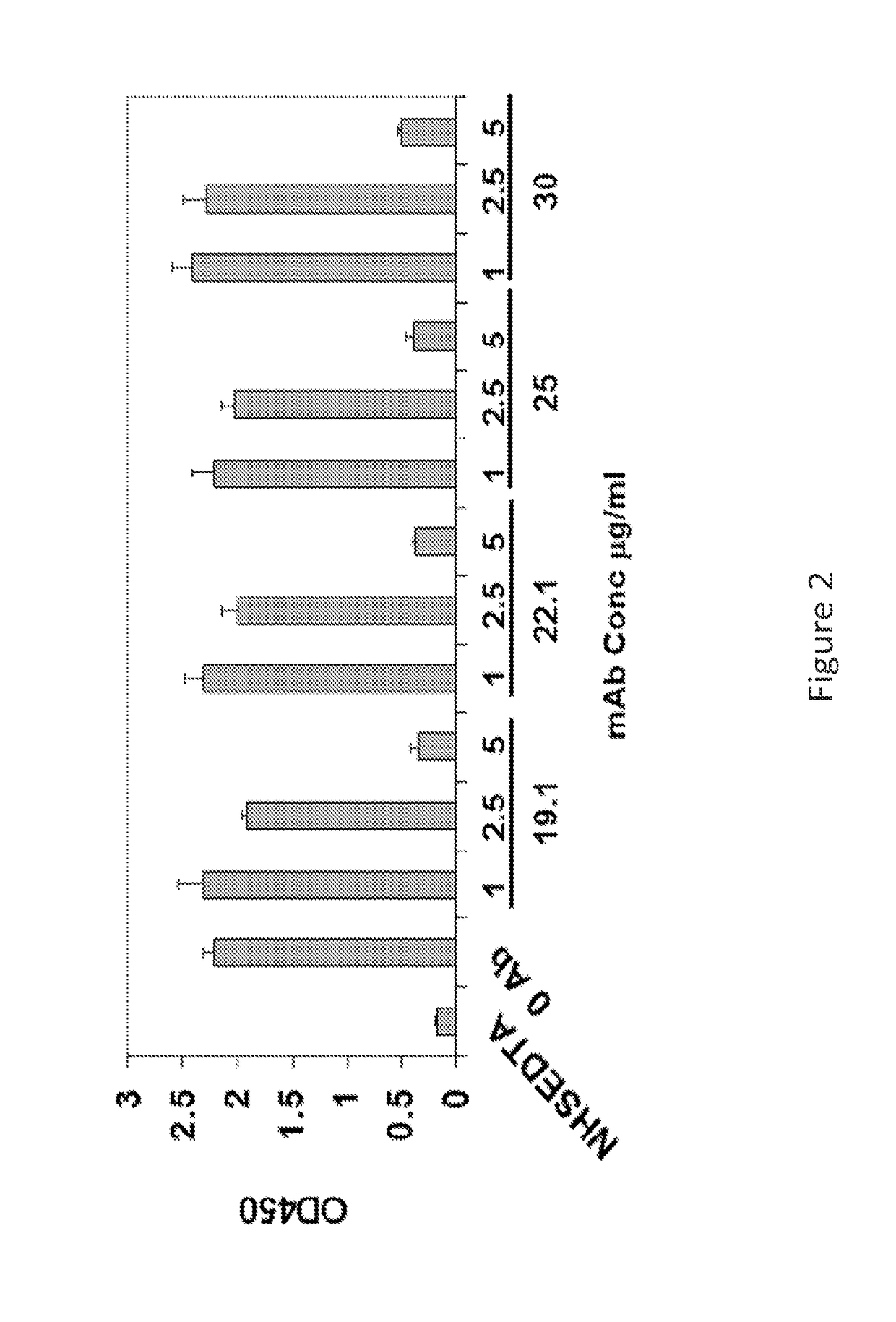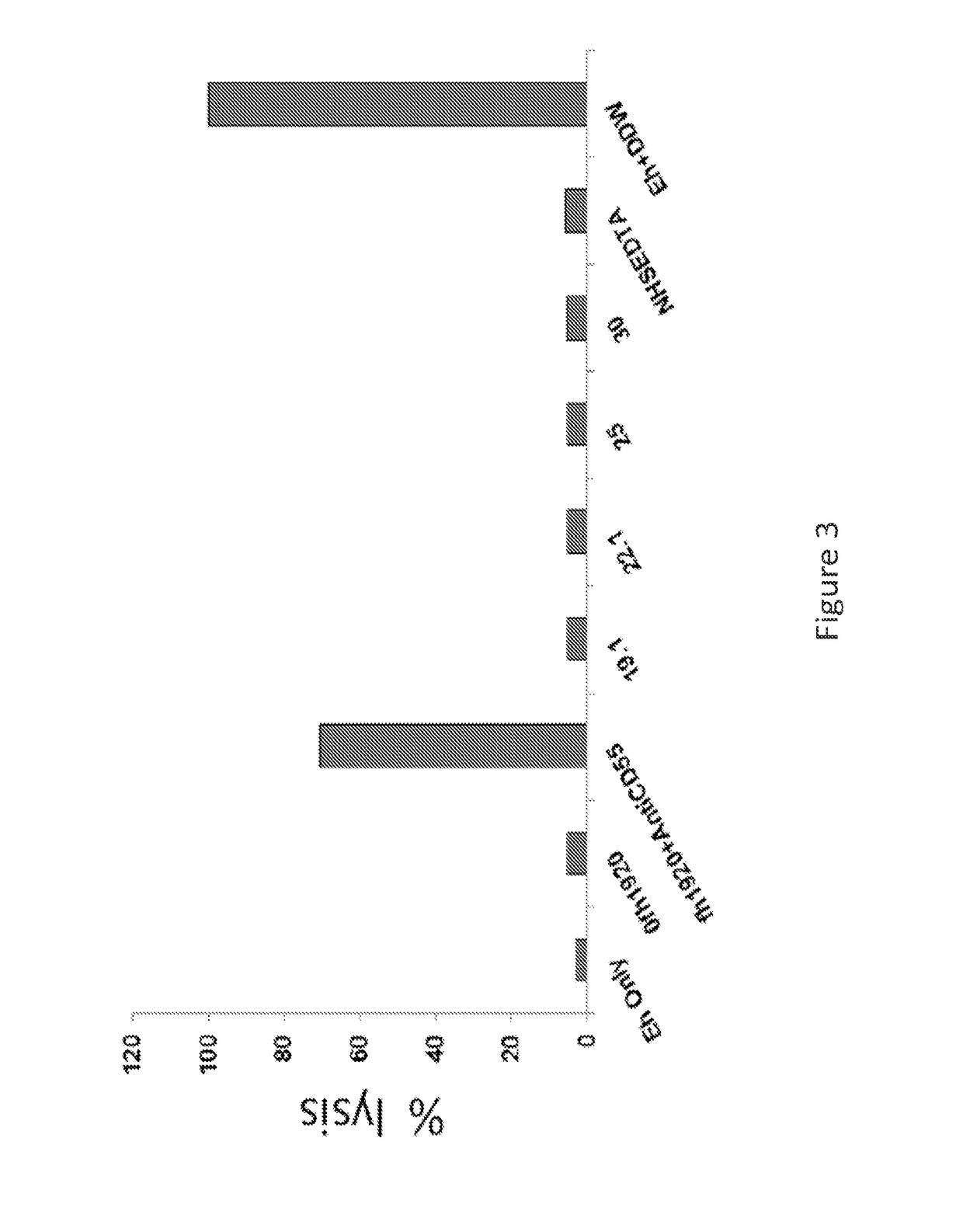Anti-properdin antibodies and uses thereof
a technology of anti-properdin antibodies and antibodies, applied in the field of anti-properdin antibodies, can solve problems such as inflammation injuries, and achieve the effect of no lysis
- Summary
- Abstract
- Description
- Claims
- Application Information
AI Technical Summary
Benefits of technology
Problems solved by technology
Method used
Image
Examples
experimental examples
[0169]The invention is now described with reference to the following Examples. These Examples are provided for the purpose of illustration only and the invention should in no way be construed as being limited to these Examples, but rather should be construed to encompass any and all variations which become evident as a result of the teaching provided herein.
[0170]Without further description, it is believed that one of ordinary skill in the art can, using the preceding description and the following illustrative examples, make and utilize the compounds of the present invention and practice the claimed methods. The following working examples therefore, specifically point out the preferred embodiments of the present invention, and are not to be construed as limiting in any way the remainder of the disclosure.
example 1
[0171]Anti-human properdin monoclonal antibodies were generated using the hybridoma method first described by Kohler et al. (1975, Nature, 256:495) with some modifications. Properdin knockout mice (fP− / −) (8 weeks old) were intraperitoneally immunized with 50 μg (in 100 μl PBS) purified human properdin (CompTech Inc) emulsified with 100 μl Titermax adjuvant (From Sigma). At day 14 and day 21, the mice were again immunized with 50 μg purified human properdin emulsified with Titermax adjuvant. One week later, the mice were examined for serum anti-properdin titer. Mice with an antibody titer of 1:10,000 or higher were used for hybridoma fusion experiments. Two days prior to fusion experiment, mice were injected (i.p) again with 50 μg purified human properdin (in 100 μl PBS). Mice were sacrificed by cervical dislocation and spleen was isolated for preparation of single cell suspension by mechanical disruption. The spleen cell suspension was washed once with HYB-SFM (Invitrogen)+10% FBS ...
example 2
[0173]The dose-dependent inhibition of LPS-induced AP complement activation by mAb 19.1, 22.1, 25 and 30 was examined. All 4 clones of mAbs effectively inhibited AP complement activation when added to 50% normal human serum (NHS) at a final concentration of 5 μg / ml (see FIG. 2). ELISA plates (96-well, Nunc) were coated with 50 μl LPS solution (40 μg / ml in phosphate-buffered saline [PBS]) overnight at 4° C. The next day, plates were washed 3× with PBS containing 0.05% Tween-20 (PBS-T) and 50 μl 50% normal human serum (NHS) that had been incubated with 1-5 μg / ml anti-properdin mAb for 1 hour at 4° C. was added. The NHS was diluted with GVB-EGTA-Mg++ (containing 10 mM EGTA and 2.5 mM Mg++ final concentration). The plate was left to incubate at 37° C. for 1 hour, washed 3× with PBS-T and then 50 μl HRP-conjugated goat anti-human C3 antibody (1:4000, Cappel) was added and the plate was left for 1 hour room temperature. The plate was washed 3× with PBS-T and then developed using BD Pharmi...
PUM
| Property | Measurement | Unit |
|---|---|---|
| concentration | aaaaa | aaaaa |
| concentration | aaaaa | aaaaa |
| concentrations | aaaaa | aaaaa |
Abstract
Description
Claims
Application Information
 Login to View More
Login to View More - R&D
- Intellectual Property
- Life Sciences
- Materials
- Tech Scout
- Unparalleled Data Quality
- Higher Quality Content
- 60% Fewer Hallucinations
Browse by: Latest US Patents, China's latest patents, Technical Efficacy Thesaurus, Application Domain, Technology Topic, Popular Technical Reports.
© 2025 PatSnap. All rights reserved.Legal|Privacy policy|Modern Slavery Act Transparency Statement|Sitemap|About US| Contact US: help@patsnap.com



